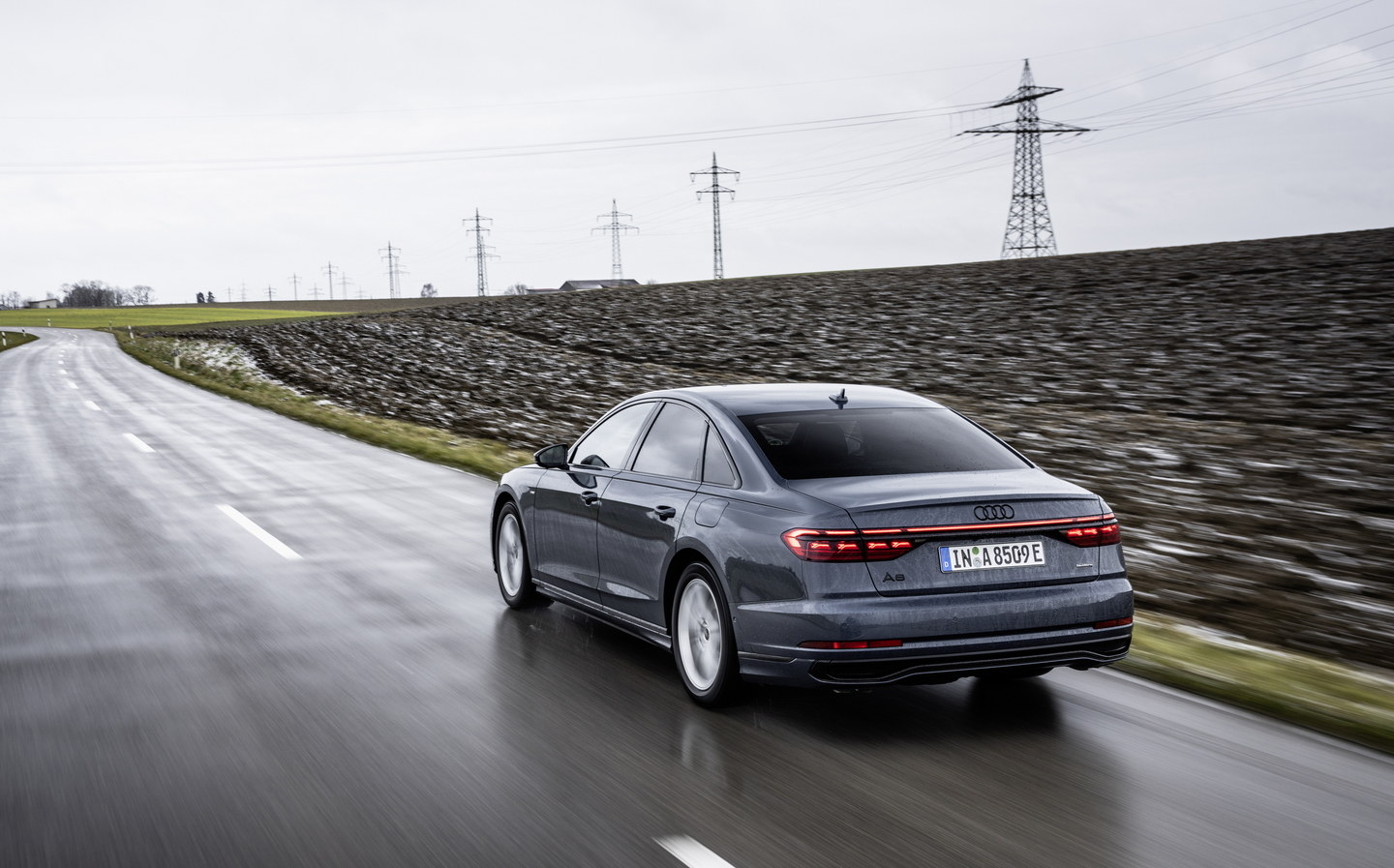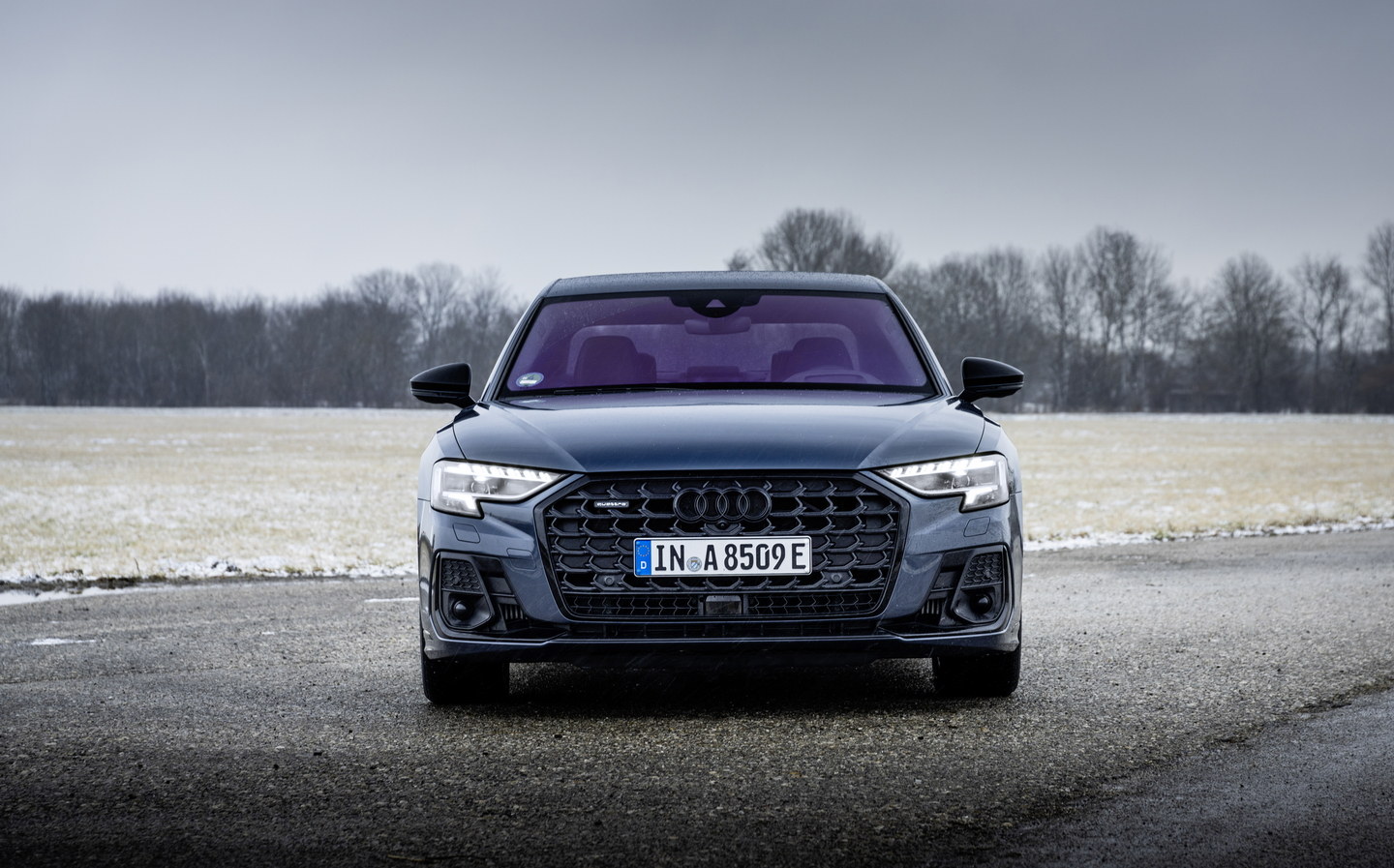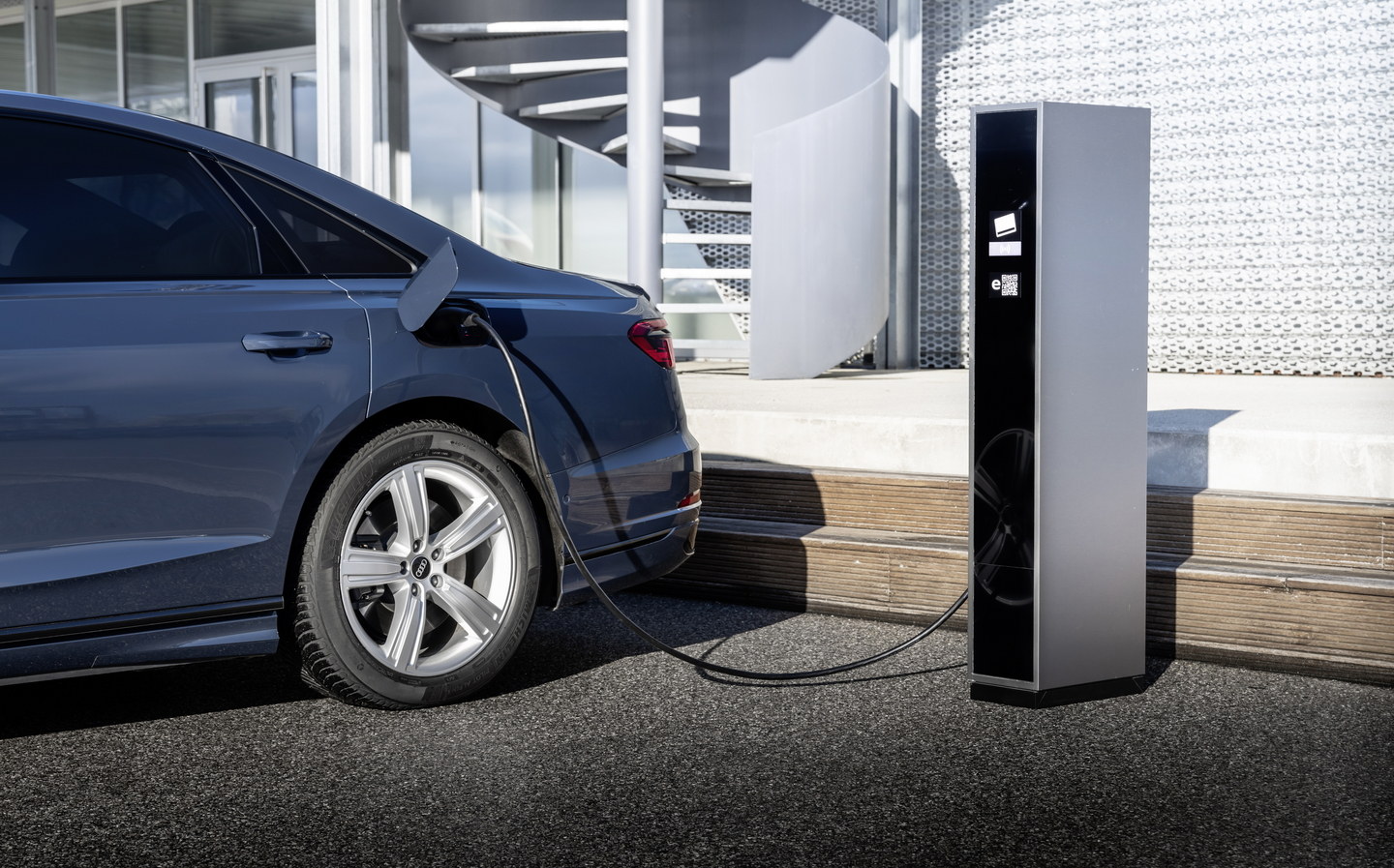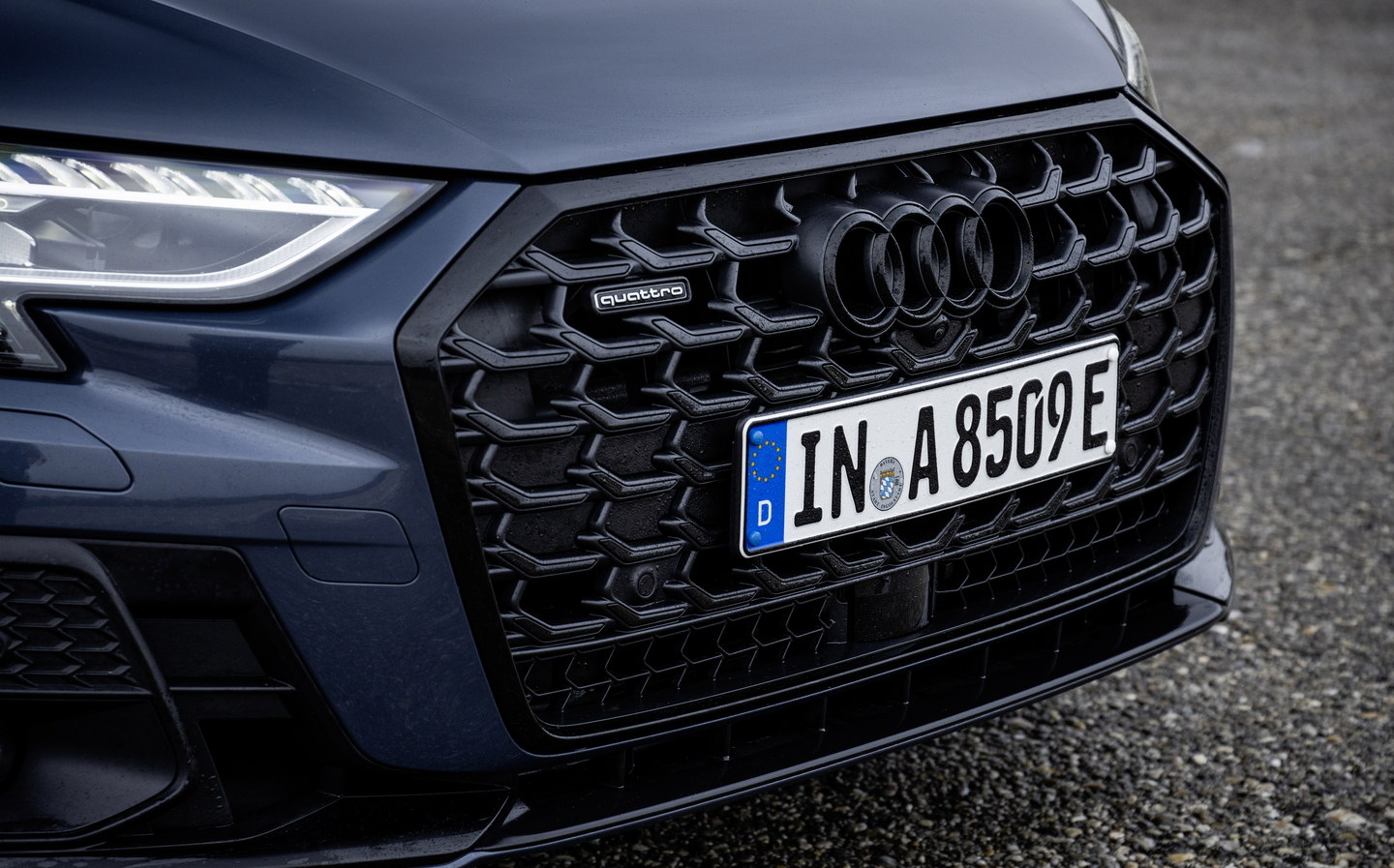Audi A8 review 2022: A brilliant luxury executive car, but is it brilliant enough?
Obviously it has a bigger grille
THE AUDI A8 has spent years living in the shadow of its arch-rivals, the BMW 7 Series and Mercedes S-Class. Sitting in an unloved middle ground between the sporty, driver-orientated BMW and the truly plush Mercedes, sales have been slow ever since the latest-generation car was launched in 2017.
With that in mind, Audi has updated its luxury limousine for 2022, fettling the exterior styling and adding some extra tech to try and make the A8 more of a contender. The changes aren’t enormous but Audi will be hoping those small upgrades add up to make a substantial difference in the car’s popularity.
As before, the A8 still comes in a choice of lengths and trim levels, with customers getting the option of petrol, diesel and plug-in hybrid power. There’s also a high-performance S8 version.
All the variants major on quality and technology, with loads of standard equipment and clever gizmos we expect to see on the A3s and A4s of the future, but the A8 is still facing an uphill battle against those chief rivals.
Still, the BMW was updated a while ago now (2019) and it was given buck teeth (as is BMW’s wont these days), while the new Mercedes, launched last year, majors on technology that baffles more than supports the driver. Is this the A8’s time to shine?

Exterior design
The A8 is a big old beast at more than five metres in length, while the long-wheelbase ‘L’ model is stretched further, at more than 5.3 metres. It’s a proper limo. That bulk is paired with a muscular, stocky kind of figure that makes the A8 feel business-like and tough alongside the more elegant S-Class and the downright ugly 7 Series.
As part of the updates for 2022, there’s a new grille that’s bigger and more obnoxious than before, while there’s a continuous light strip across the back of the car.
Audi has also added 11 new colours to the range, some new alloy wheel designs and new OLED rear lights, as well as high-tech Digital Matrix LED headlights for the lavishly equipped ‘Vorsprung’ models.

The overall effect is one of light modernisation. The A8 looks much the same as before, but the old grille was beginning to age slightly alongside other Audi products, and the updates bring it right back into line. What you think of the new grille is a matter of taste, but otherwise the A8 remains a solidly attractive design.
There are one or two issues, though, including the alloy wheels, which range from 18 to 21 inches in diameter, depending on which model you choose. The smaller 18in rims look a bit small on such an enormous car, with only the 21in rims of the top-end models really filling the arches. Even then, the A8 still looks a trifle under-wheeled to modern eyes.
Interior and practicality
The updates have made no difference to the Audi’s interior space, or indeed the interior design. But then the cabin was so modern anyway that major changes were hardly needed, thanks to Audi’s stunning and highly configurable Virtual Cockpit instrument display and the twin touchscreens in the centre of the dashboard.

Build quality is predictably flawless, and the design feels very futuristic, but there is room for improvement. Audi has a penchant for piano black plastic that always looks a little cheap and becomes quite grubby after it has been touched a few times, while the door pulls feel uncharacteristically unwieldy. But those are minor complaints in a generally exquisite cabin that’s beautifully made and thoroughly modern to look at.
Space is plentiful, as you’d expect in a car this size, but the standard-wheelbase car doesn’t feel substantially more spacious than an A6 saloon. Of course there’s a little more legroom and there’s certainly more luxury, but it isn’t an enormous difference.
Opt for the long-wheelbase model, however, and the improvement is immediately apparent, so chauffeurs will want to spend a little more on the A8 L.

For most A8 models, boot space is a match for the S-Class and 7 Series, which means even bulky items such as suitcases and golf clubs will fit in there quite happily.
The boot isn’t especially deep, which might cause an issue for some, but we imagine most owners won’t be taking their A8 on many trips to the local recycling centre.
It’s worth noting that the plug-in hybrid’s boot capacity is noticeably reduced by the electrical gubbins underneath, although at 390 litres there’s more room than you’d find in the taller boot of a VW Golf hatchback, for example.
Technology and safety
Technology is one of Audi’s big selling points, no matter whether you choose an A1 or a Q7, so it’s no surprise to see the flagship saloon has piled on the equipment. Not only is there the now-familiar but no-less-impressive Virtual Cockpit, but Audi has set up two touchscreens to operate most of the vehicle’s functions, including the climate control.

The screen is a nice idea and works fairly well, but it sits low in the cockpit and it’s too much of a distraction to use effectively while on the move. From a purely ergonomic point of view, Audi would have been better using physical buttons, a la BMW, but that might have spoilt the chunky-but-futuristic style Audi has chosen.
Of course, none of that tech is particularly new, but Audi claims there have been strides made in the on-board safety systems.
Around 40 driver assistance features are now fitted to the A8, including the new Digital Matrix LED headlights, which are designed to adapt to the conditions and road ahead, as well as preventing other drivers from being dazzled. The car can effectively pick out the lane on a motorway with more intense light, a move designed to help reduce the chances of the driver drifting across the white line.
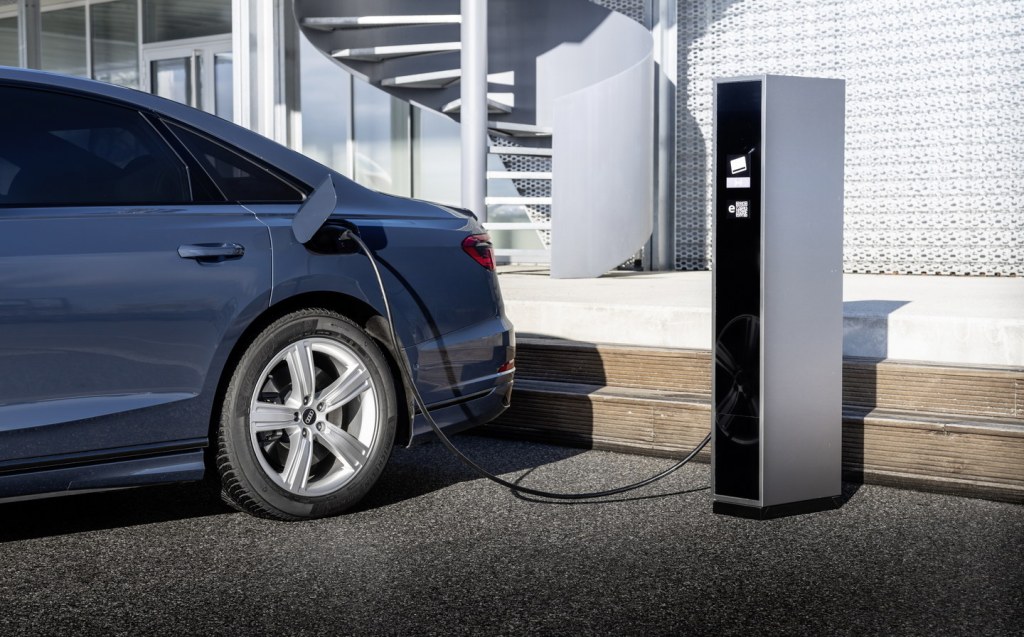
The car also comes with the usual goodies, including adaptive cruise control and emergency braking systems, while the plug-in hybrid models get a clever navigation system that allows it to plan when it will use the petrol engine or the electric motor to provide the highest fuel economy possible.
Opt for the Rear Comfort Pack for long-wheelbase models and you’ll also get two 10.1in HD displays for those in the rear.
Performance, power output and acceleration
Audi has taken to giving its models a numerical naming system that bears no relation to the size of the engine. The basic rule is that bigger numbers equal more power.
So the basic 50 TDI is the least powerful option in the range, but everything is relative. With 282bhp, the 3-litre diesel engine is hardly a shrinking violet, and it promises an ample 5.9-second 0-62mph time and economy of more than 40mpg.
The 3-litre 55 TFSI petrol option, meanwhile, has significantly more power – a full 339bhp – but less torque, so it’s only marginally faster. It’s thirstier, too, hitting 31mpg on the official economy test.

Then there’s the 60 TFSI e plug-in hybrid we tested, which combines a 3-litre V6 petrol engine with an electric motor to produce 456bhp and take the 0-62mph time below five seconds.
The stats suggest this will be the most economical option, with an impressive 156.9mpg official economy figure, but that doesn’t tell the whole story. On short trips, the 34-mile electric range will make the car very economical, but only when it can be charged between journeys. For those doing mostly local miles and for companies looking to save on tax and city-centre charges, it’ll make a lot of sense, but those doing regular motorway slogs will be better served by the diesel.
And for those who value performance, there’s always the S8. A turbocharged 4-litre V8 petrol engine provides 563bhp, and as with every version of the A8, the power goes to all four wheels via an eight-speed automatic gearbox. In S8 guise, though, it takes a mere 3.8 seconds to sprint from a standstill to 62mph.

Ride and handling
To compete with the S-Class and 7 Series, the A8 must either be incredibly comfortable or incredibly good to drive – preferably both. But Audi has once more struck a kind of middle ground that puts the A8 somewhere between the two.
The ride is generally very good, especially considering we tested the heavier plug-in hybrid version. Air suspension is standard across the A8 range, and our test car flattened the bumps smoothly and effectively. Even with the heavy plug-in hybrid system on board, it felt composed and settled, though not as soft as the S-Class.

Refinement is impressive, too, with practically no road roar at any speed and only a whisper of wind noise at motorway cruising speed. Then there’s the plug-in hybrid system, which only makes a noise when the petrol engine fires up. Even then it’s a pleasant sound, a true V6 snarl that feels more characterful – if less refined – than the 3-litre straight-six engine in the BMW 7 Series plug-in hybrid.
For the drivers – and particularly the keen ones – there isn’t much to get excited about. The A8 isn’t especially involving, but light steering, the turning circle afforded by the optional all-wheel steering and a raft of driver assistance systems make it an easy car to drive. Add in the comfort and refinement, and it becomes an extremely easy car in which to while away motorway journeys.
But those who want more excitement will need to pick the S8. With a clever active suspension system that makes the car lean into corners and all-wheel steering for improved handling, it’s more engaging on a back road, although no amount of technology can mask its size and weight.
So though it can cope with the twists and turns impressively, it doesn’t feel as light on its feet as the BMW. Like the other A8 models, it’s at its best when it’s blasting along a de-restricted German motorway.

Pricing and on-sale date
The A8 is available to order now with prices starting at a hefty £74,985, which pays for the basic, standard-wheelbase Sport model powered by the 3-litre diesel engine.
Moving up to the 60 TFSI e powertrain we drove takes the starting price to £86,960, while opting for the high-performance S8 version will bring the price well over the £100,000 mark.
It sounds like a lot – and it is – but it’s in line with rivals including the BMW 7 Series and Mercedes-Benz S-Class.
Verdict: Audi A8 review

The A8 has changed so little even Audi calls it “enhanced” rather than ‘new’. It’s still beautifully built, full of technology and wonderfully comfortable, albeit not quite as pillowy soft as the Mercedes S-Class on the road.
The hybrid system is clever and even in standard-wheelbase form, there’s plenty of space in the rear, but the A8 is still faced with the same old problem. The BMW 7 Series, while uglier, is a better car to drive, and the dashboard of the Mercedes S-Class may be more blingy than a video games arcade but the Merc is a better car to be driven in, leaving the Audi alone in an awkward automotive no-man’s land.
Tweet to @JFossdyke Follow @JFossdyke
Related articles
- After reading this review of the 2022 Audi A8, you might want to see our review of Porsche Taycan GTS
- Also check out what we said about the new Audi Q4 e-tron
- You may be interested in our extended test of the Range Rover Sport PHEV
Latest articles
- Should I buy a diesel car in 2025?
- F1 2025 calendar and race reports: The new Formula One season as it happens
- Zeekr 7X AWD 2025 review: A fast, spacious and high tech premium SUV — but someone call the chassis chief
- Denza Z9GT 2025 review: Flawed but sleek 1,062bhp shooting brake from BYD’s luxury arm
- Extended test: 2024 Renault Scenic E-Tech review







